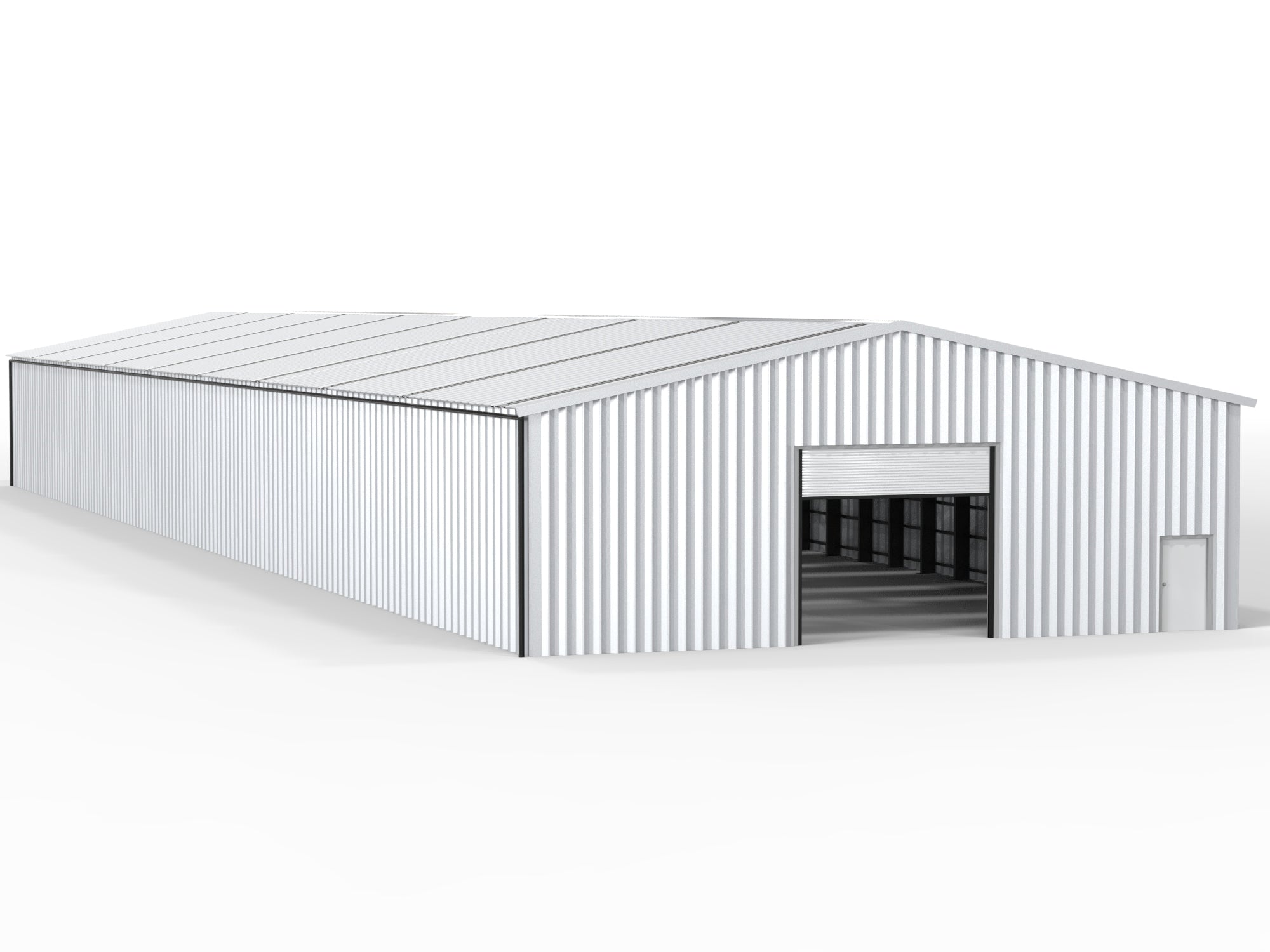
The Ultimate Guide to Storage Buildings: From Temporary Solutions to Industrial Giants
Storage buildings have become essential components in a wide range of industries, including agriculture and manufacturing. Whether you need a temporary facility or a long-term investment, the right storage building may give the required size, security, and utility.
Let us take a look at the many sorts of storage facilities so that you can make an informed decision about your storage needs.
Types of Storage Buildings
Temporary Storage Buildings: These buildings are appropriate for short-term storage requirements. They provide a versatile solution that can be simply assembled and dismantled as needed. These structures are commonly utilized in construction, agriculture, and events where space is required for a limited duration.Temporary storage buildings can be made from materials like fabric, wood, or lightweight metal, depending on the specific needs. They can be used for storing machinery, tools, raw materials, and even vehicles.
Steel Storage Buildings: Steel storage buildings are known for their strength and durability. They are a popular choice for both temporary and permanent storage solutions, offering a robust structure that can withstand harsh weather conditions. Steel storage buildings are widely used in industrial and agricultural settings. They can be customized to include additional features like insulation, ventilation, and security systems, making them suitable for storing valuable or sensitive items.
Agricultural Buildings: Agricultural buildings are specifically designed to meet the needs of farming and ranching operations. These structures can be used to store equipment, livestock, feed, and crops, providing a secure environment that protects against weather and pests. Agricultural buildings can range from simple pole barns to more complex steel structures. The choice of design and materials will depend on the specific needs of the farm, including the type of livestock or crops being stored.
Industrial Buildings: Industrial buildings are large, sturdy structures designed to support manufacturing, warehousing, and other industrial activities. They are often constructed using steel and concrete, providing a durable and secure environment for heavy machinery and large quantities of goods. Industrial buildings can be designed to include features like heavy-duty flooring, advanced security systems, and specialized ventilation. These buildings are often used in manufacturing, logistics, and distribution industries.
Choosing the Right Storage Building
Selecting the right storage building depends on several factors, including your specific needs, budget, location, and intended use. Here are some key considerations to keep in mind:
Purpose of the Building
- Temporary vs. Permanent: Determine whether you need a short-term solution or a long-term investment. Temporary storage buildings are ideal for projects with a defined end date, while steel or industrial buildings are better suited for permanent installations.
- Specific Needs: Consider what you’ll be storing. Agricultural buildings may require features like ventilation and pest control, while industrial buildings might need heavy-duty flooring and large access points.
Budget
- Initial Costs: Temporary storage buildings are generally more affordable upfront, while steel and industrial buildings can require a more significant initial investment.
- Long-Term Costs: Consider maintenance, repairs, and potential upgrades. Steel storage buildings, for example, have low maintenance costs but may require a higher upfront investment.
Location and Climate
- Weather Resistance: Choose materials that can withstand local weather conditions. Steel storage buildings are excellent for areas prone to heavy snow, rain, or strong winds.
- Accessibility: Ensure the location is accessible for the intended use. Agricultural buildings should be easily accessible from fields, while industrial buildings need proximity to transportation networks.
Customization and Features
- Size and Layout: Determine the size and layout that will best suit your needs. Temporary storage buildings can be adjusted to fit different spaces, while industrial buildings may require specific designs for machinery and workflow.
- Additional Features: Consider adding features like insulation, ventilation, and security systems to enhance the building's functionality and longevity.
Agricultural Buildings: Supporting the Backbone of Agriculture
Agricultural buildings play a crucial role in modern farming. From storing hay and grain to housing livestock, these structures are essential for maintaining a productive and efficient farm.
- Barns and Sheds: Traditional agricultural buildings like barns and sheds provide storage for equipment, feed, and livestock. They are often made from wood, steel, or a combination of materials.
- Greenhouses: Greenhouses are specialized agricultural buildings designed to create controlled environments for growing crops. They can be constructed from glass, plastic, or polycarbonate materials.
- Silage Storage: Silage storage buildings are used to store fermented feed, which is essential for livestock during the winter months. These buildings are typically made from steel or concrete to ensure durability and protection from the elements.
Customization is key in agricultural buildings, as each farm has unique needs. Whether you’re storing machinery or protecting crops from pests and weather, the right agricultural building can make all the difference.
Industrial Buildings: Powering the Economy
Industrial buildings are the workhorses of the economy, providing the space and infrastructure needed for manufacturing, warehousing, and distribution. These buildings are designed to handle heavy loads, large machinery, and high traffic, making them indispensable for industrial operations.
- Warehouses: Warehouses are large industrial buildings used for storing goods and raw materials. They can be equipped with advanced shelving systems, climate control, and security features to protect valuable inventory.
- Manufacturing Plants: Manufacturing plants are industrial buildings where goods are produced. These facilities are often customized to accommodate specific machinery, production lines, and workflow requirements.
- Distribution Centers: Distribution centers are specialized industrial buildings designed for sorting, packing, and shipping goods. They are strategically located near transportation hubs to facilitate efficient distribution.
The design and construction of industrial buildings require careful planning to ensure they meet the demands of modern industry. Steel is a popular material for these buildings due to its strength, durability, and ability to be shaped into large, open spaces.
Steel Storage Buildings: Strength and Durability
Steel storage buildings are a top choice for those seeking a strong, durable, and low-maintenance storage solution. These buildings are highly versatile and can be used in various applications, from temporary storage to permanent industrial facilities.
- Advantages of Steel: Steel is resistant to fire, pests, and rot, making it an excellent choice for storage buildings. It also offers superior strength, allowing for large, open spaces without the need for interior columns.
- Customization Options: Steel storage buildings can be customized with features like insulation, windows, doors, and ventilation to meet specific needs. They can also be designed to blend in with surrounding architecture or stand out as a unique structure.
- Applications: Steel storage buildings are used in agriculture, industry, retail, and even residential settings. They are ideal for storing vehicles, machinery, tools, and other valuable items.
Steel storage buildings offer long-term value, with low maintenance costs and a lifespan that can last several decades. Their versatility makes them a popular choice for both temporary and permanent storage needs.
Conclusion
Storage buildings, whether temporary or permanent, play a vital role in various industries, from agriculture to manufacturing. By understanding the different types of storage buildings, including temporary storage buildings, agricultural buildings, industrial buildings, and steel storage buildings, you can make an informed decision that meets your specific needs and reach out to Kit Buildings for the best solutions possible!



